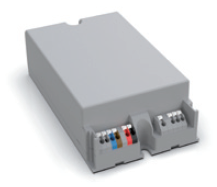ZHAGA
PIONEERS WERE NEEDED …
WE DIDN’T CHICKEN OUT.
Simplicity and evolutivity… 100% of Rohl® luminaires are 100% ZHAGA®.
The Zhaga® consortium, founded in 2010, is an initiative of various engaged players of the lighting industry. More than 200 companies gathered in order to make LED lighting sources, as well as their drivers and connectors, interchangeable by harmonising their technical specifications.

- When interoperability goes together with liberty
Thanks to the Zhaga® standard your Rohl luminaire does not feature propietary equipment You are free to choose the LED modules, the drivers or the sockets you prefer, as long as they are Zhaga®. - It’s all planned out
Whether for technical, regulatory or usage chnages, you will always find a solution in the Zhaga® consortium. - You can choose among the best brands
The availability of Zhaga® spare parts is guaranteed. The standard has been adopted by leading equipment brands : Phillips, Osram, Samsung, Lumileds, Tridonic, VS , Future …
LED modules
All lighting projects are different and each requires an appropriate lighting design. We use LED modules of the latest generations and complying with the ZHAGA® standard that make it possible to meet the different needs, independently !

2 x 8 LED

2 x 4 LED
LED drivers
All our luminaires are designed to integrate the Zhaga® standard. But we go further than just integrating only one format. All our luminaires can integrate several Zhaga® formats et can thus allow future evolutions.

The critical importance of properly driving the system leads us to meet stringent requirements
for the technical characteristics :
- The performance should be as high as possible to guarantee a good energy efficiency (in lm/W) of the LED/Driver system.
- The power factor (cos ϕ) should be as close as possible to 1 and the harmonic distorsion as low as possible to reduce losses.
- The protection against overvoltage should be at least 6 kV and ideally up to 10 kV.
LED modules Technical charateristics
4 colour temperatures : 4000 K, 3000 K, 2700 K et 2200 K, 11 standard lighting distributions (8 asymmetrical + 3 symmetrical)
LED ESD protection 8kV and temporay overvoltage 6kV
Equipped by default with a NTC temperature probe. Spring connectique allowing change of modules on site.
| Intensity | Power | 2200K lumen output | 2200K efficiency | 2700K lumen output | 2700K efficiency | 3000K lumen output | 3000K efficiency | 4000K Lumen output | 4000K efficiency |
|---|---|---|---|---|---|---|---|---|---|
| 700 mA | 37 W | 3645 lm | 99 lm/W | 4165 lm | 113 lm/W | 4537 lm | 123 lm/W | 4760 lm | 129 lm/W |
| 500 mA | 26 W | 2770 lm | 107 lm/W | 3166 lm | 122 lm/W | 3448 lm | 133 lm/W | 3618 lm | 139 lm/W |
| 350 mA | 19 W | 1957 lm | 103 lm/W | 2236 lm | 118 lm/W | 2436 lm | 128 lm/W | 2555 lm | 134 lm/W |
LED Drivers functionnalities
MINIMAL FUNCTIONALITIES //
- DALI : open and interoperable communication protocole
- JUST Light : Current optimisation to achieve desired lighting level.
- Off-peak hours power reduction.
- Temperature probe allowing not to exceed the critical threshold.

The main DALI objective has always been to facilitate the installation and use of luminiares allowing a dimmable and customized lighting. The first DALI version made this objective possible by recommending the standardization of functionalities and communication systems.

The second DALI version – DALI-2 – improves the first version by addint the possibility to integratie control devices such as light sensors or presence detectors. DALI-2 also brought an improved interoperability between DALI-compatible devices. In order to support this interoperability promise, DiiA introduced a DALI-2 certification program.

D4i products are DALI-2 products. D4i is DALI-2 extension with a package
of specific complementary functionalities for public lighting systems. They
are divided in several categories including :
- Information : luminaire reference, manufacturer name, nominal light output, nominal pozer, colour temperature, colour rendering index, lighting distribution type (CIE)
- Diagnostic : Number of working hours, number of lightings, power factor, number of times admissible driver or LED module temperature has been exceeded …
- Measurements : active power and energy. Apparent and reactive power and energy in option.



